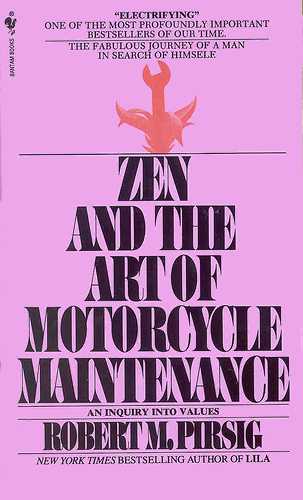This book, a best-seller written in 1974, is regarded as a classic and one of the most important and influential books of the last century.
Superficially, it’s about the protagonist and his troubled son who go on a motorcycle trip across America.
During their rides he expounds philosophically on the two different ways in which people subjectively perceive technology and then attempts to describe a way to reconcile this dualism.
These two approaches to technology the author calls classic and romantic modes of thought. The classic approach is technical and analytic. It is concerned with underlying form and purpose.
In the language of the 1960s and ’70s, the classic approach is “square”.
The romantic approach is intuitive, idealistic and symbolic. It is therefore “groovy” instead of “square”.
The book is in some way, an attempt to reconcile the schism that appeared in American society in the 1960s with the emergence of the romantic hippie movement, which rejected the dominant classic mainstream narrative.
However, this dichotomy extends further than the social and political milieu of 1960s and 1970s America and the author traces its origins all the way back to ancient Greece and the analytical approaches of Socrates, Plato and Aristotle. One can also see this dichotomy in software development; between the classic, analytical developers or engineers and the romantic designers.
Differing approaches to esthetics and beauty
The author mentions a perceived death force, apparently inherent in technology, but which is actually something which emerges when one approaches technology from a strictly romantic viewpoint without any appreciation for the classic understanding of underlying form and function. Out of a classic understanding of technology, a different esthetic value arises, one that appreciates the beauty of the optimal combination of form and function.
Programmers talk about code that is elegant. Not elegant in a visual or artistic sense, but elegant in the sense that is it is clear, succinct and functional to a degree that it cannot be improved upon. This is the classical esthetic ideal.
To a romantic person, a complex schematic might look complicated and unappealing, while to the classic, analytical minded person it might be a thing of beauty.
The author reconciles the romantic and classic modes of thought by pointing towards unanalyzed, non-dualistic and “ultimate” reality.
The author asserts that non-dualistic direct experience is the source of Quality in thoughts, acts and creations. Quality which encompasses both the romantic and classic approaches.
The book ultimately reveals that the protagonist himself has a dualistic split within his own mind, which he needs to reconcile.
Another layer to the story
Besides the superficial story of the motorcycle trip, the book is also about a man who experienced non-dualistic, cosmic consciousness; pessimistically interpreted by his society as a pathology (i.e. mental illness or insanity), and therefore in need of “correction”.
This alterered state of consciousness, considered an illness by psychiatrists, is triggered by an analytical, philosophical exploration of the nature of Quality, during which this man, through analysis, scales the heights of abstraction which his mind can attain, all the way up to non-dualistic experience.
Through this, he realises that non-dualistic experience, that which we experience immediately before the rational mind starts analyzing and categorizing, cannot be defined. And yet, Western analytical thought is not able to meaningfully deal with something which cannot be defined.
Practical lessons on quality
Ultimately the author reasons that Quality, in word and deed arises out of a state of being in contact with direct, immediate experience while being completely immersed in what you are doing or working on.
This is the Zen of motorcycle maintenance.
People also talk about being “in the zone”, and in Psychology there is the notion of ”flow“.
In short, one should strive to experience and maintain inner peace while doing the work. The end result and end goal should also be inner peace. In so doing, the experience of doing the work will have quality and the work itself will have quality.
Conclusion
I loved this book. Since reading it, I have a completely new notion of quality, a new appreciation for the limits of analytics and reason and for the ultimately ineffable nature of direct experience.
The book itself is a work of quality, and the author states in an afterword that his motivation for writing the book was because he deemed it a higher quality endeavor than not writing it.
I thank him for that, and because of it, I am now inspired to maintain inner peace while I work, to strive towards inner peace as my ultimate goal, and to thereby achieve quality in what I do.
Hello, I'm JC Brand, software developer and consultant.
I have decades of experience working with open source software, for governments, small startups and large corporates.
I created and maintain Converse, a popular XMPP chat client.
I can help you integrate chat and instant messaging features into your website or intranet.
Don't hesitate to contact me if you'd like to connect.

